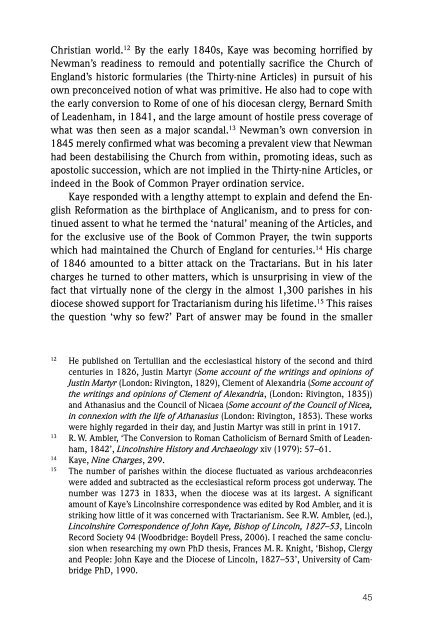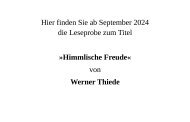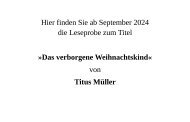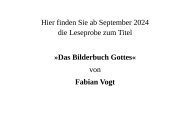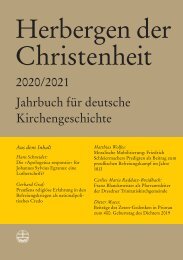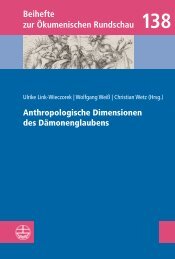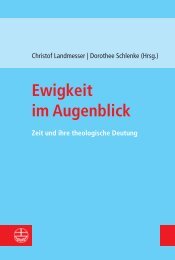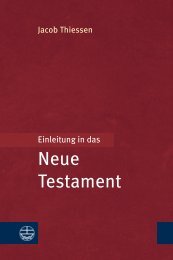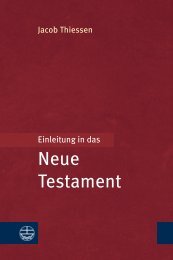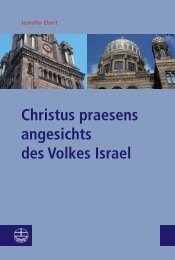Mark Chapman | Matthias Grebe | Friederike Nüssel | Frank-Dieter Fischbach (Eds.): Towards Interchangeability (Leseprobe)
This book examines how the practice of episcopacy in the Church of England and the EKD affects the claim that the ‘historic episcopate’ is a necessary condition for ‘the full interchangeability of ministers’. It addresses four questions relating to the practice of oversight: How have different forms of oversight sought to maintain the apostolic ‘historic’ faith in history and today? How does the exercise of authority within contemporary societies relate to the pre-modern ideas expressed in the idea of historic episcopate? How has the practice of oversight changed in the light of demographic changes and declining levels of church membership? What are the implications of synodical government and shared oversight for the concept of ‘historic episcopate’? The book’s goal is to explore whether an interdisciplinary analysis of episcopacy can assist the churches in establishing a new understanding of the “historic episcopate”.
This book examines how the practice of episcopacy in the Church of England and the EKD affects the claim that the ‘historic episcopate’ is a necessary condition for ‘the full interchangeability of ministers’. It addresses four questions relating to the practice of oversight: How have different forms of oversight sought to maintain the apostolic ‘historic’ faith in history and today? How does the exercise of authority within contemporary societies relate to the pre-modern ideas expressed in the idea of historic episcopate? How has the practice of oversight changed in the light of demographic changes and declining levels of church membership? What are the implications of synodical government and shared oversight for the concept of ‘historic episcopate’?
The book’s goal is to explore whether an interdisciplinary analysis of episcopacy can assist the churches in establishing a new understanding of the “historic episcopate”.
Create successful ePaper yourself
Turn your PDF publications into a flip-book with our unique Google optimized e-Paper software.
Christian world. 12 By the early 1840s, Kaye was becoming horrified by<br />
Newman’s readiness to remould and potentially sacrifice the Church of<br />
England’s historic formularies (the Thirty-nine Articles) in pursuit of his<br />
own preconceived notion of what was primitive. He also had to cope with<br />
the early conversion to Rome of one of his diocesan clergy, Bernard Smith<br />
of Leadenham, in 1841, and the large amount of hostile press coverage of<br />
what was then seen as a major scandal. 13 Newman’s own conversion in<br />
1845 merely confirmed what was becoming a prevalent view that Newman<br />
had been destabilising the Church from within, promoting ideas, such as<br />
apostolic succession, which are not implied in the Thirty-nine Articles, or<br />
indeed in the Book of Common Prayer ordination service.<br />
Kaye responded with a lengthy attempt to explain and defend the English<br />
Reformation as the birthplace of Anglicanism, and to press for continued<br />
assent to what he termed the ‘natural’ meaning of the Articles, and<br />
for the exclusive use of the Book of Common Prayer, the twin supports<br />
which had maintained the Church of England for centuries. 14 His charge<br />
of 1846 amounted to a bitter attack on the Tractarians. But in his later<br />
charges he turned to other matters, which is unsurprising in view of the<br />
fact that virtually none of the clergy in the almost 1,300 parishes in his<br />
diocese showed support for Tractarianism during his lifetime. 15 This raises<br />
the question ‘why so few?’ Part of answer may be found in the smaller<br />
12<br />
He published on Tertullian and the ecclesiastical history of the second and third<br />
centuries in 1826, Justin Martyr (Some account of the writings and opinions of<br />
Justin Martyr (London: Rivington, 1829), Clement of Alexandria (Some account of<br />
the writings and opinions of Clement of Alexandria, (London: Rivington, 1835))<br />
and Athanasius and the Council of Nicaea (Some account of the Council of Nicea,<br />
in connexion with the life of Athanasius (London: Rivington, 1853). These works<br />
were highly regarded in their day, and Justin Martyr was still in print in 1917.<br />
13<br />
R. W. Ambler, ‘The Conversion to Roman Catholicism of Bernard Smith of Leadenham,<br />
1842’, Lincolnshire History and Archaeology xiv (1979): 57–61.<br />
14<br />
Kaye, Nine Charges, 299.<br />
15<br />
The number of parishes within the diocese fluctuated as various archdeaconries<br />
were added and subtracted as the ecclesiastical reform process got underway. The<br />
number was 1273 in 1833, when the diocese was at its largest. A significant<br />
amount of Kaye’s Lincolnshire correspondence was edited by Rod Ambler, and it is<br />
striking how little of it was concerned with Tractarianism. See R.W. Ambler, (ed.),<br />
Lincolnshire Correspondence of John Kaye, Bishop of Lincoln, 1827–53, Lincoln<br />
Record Society 94 (Woodbridge: Boydell Press, 2006). I reached the same conclusion<br />
when researching my own PhD thesis, Frances M. R. Knight, ‘Bishop, Clergy<br />
and People: John Kaye and the Diocese of Lincoln, 1827–53’, University of Cambridge<br />
PhD, 1990.<br />
45


